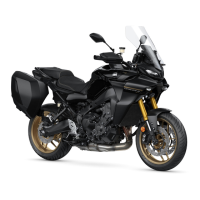
Do you have a question about the Yamaha TRACER 9 GT and is the answer not in the manual?
| Displacement | 890cc |
|---|---|
| Bore x Stroke | 78.0 mm x 62.1 mm |
| Compression Ratio | 11.5:1 |
| Fuel System | Fuel Injection |
| Transmission | 6-speed |
| Final Drive | Chain |
| Starter System | Electric |
| Frame Type | Diamond |
| Rear Brake | Hydraulic single disc, Ø 245 mm |
| Front Tire | 120/70ZR17M/C (58W) |
| Rear Tire | 180/55ZR17M/C (73W) |
| Overall Length | 2, 175 mm |
| Overall Width | 885 mm |
| Seat Height | 810 mm / 825 mm |
| Wheelbase | 1, 500 mm |
| Minimum Ground Clearance | 135 mm |
| Wet Weight | 220 kg |
| Fuel Tank Capacity | 18 L |
| Engine Type | Liquid-cooled, 4-stroke, DOHC |
| Maximum Power | 87.5 kW (119.0 PS) @ 10, 000 rpm |
| Maximum Torque | 93.0 Nm (9.5 kg-m) @ 7, 000 rpm |
| Front Suspension | Telescopic fork |
| Rear Suspension | Swingarm |
| Front Brake | Dual hydraulic disc, Ø 298 mm |
Owner's duties for safe operation, pre-ride checks, and hazard awareness.
Recommendations for wearing appropriate protective clothing and helmets for rider safety.
Precautions against carbon monoxide and guidelines for safe motorcycle loading.
Advice on genuine/aftermarket accessories, modifications, and tire safety.
Instructions for transporting the motorcycle and guidance on helmet selection and use.
Identifies key components visible from the left and right sides of the motorcycle.
Details the location and function of various controls and instruments on the motorcycle.
Explanation of the cruise control system's operation, activation, and adjustment.
Details on D-MODE for engine response and SUS-MODE for suspension damping.
Traction control settings, lift control, and clutch-less gear shifting.
Information on the BC system with ABS and its two settings.
Explanation of the immobilizer system and main switch operation.
Function of handlebar switches, including mode and cruise control.
Explanation of various indicator and warning lights on the instrument panel.
Overview of display screens, speedometer, tachometer, and vehicle information.
How to operate the clutch lever, shift pedal, and brake lever/pedal.
Procedures for checking fuel, oil, coolant levels, and brake system integrity.
Checks for clutch, drive chain, wheels, tires, pedals, levers, and fasteners.
Checking instruments, lights, switches, and the sidestand switch function.
Guidelines for the engine break-in period (0-1600 km) to ensure engine longevity.
Step-by-step instructions for starting the engine and shifting gears.
Techniques for decelerating, reducing fuel use, and safe parking.
Schedules for emission control and general maintenance; checking spark plugs.
Procedures for checking and changing engine oil, filter, and coolant.
Guidelines for tire inspection, pressure, and wheel maintenance.
Adjusting levers, checking pads, fluid, chain slack, and lubrication.
Procedure for replacing fuses and a chart for diagnosing common issues.
Handling engine overheating and proper procedures for motorcycle storage.
Detailed steps for washing, drying, polishing, and protecting the motorcycle after washing.
Guidelines for storing the vehicle in a cool, dry place and preparing for long-term storage.
Key specifications for dimensions, engine, fuel capacity, and recommended fuel.
Specifications for load capacity, brakes, suspension, electrical system, and lights.
Recording VIN, engine serial number, and model label for registration and parts ordering.
Location of diagnostic connector and information on vehicle data storage and usage.


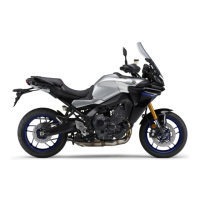
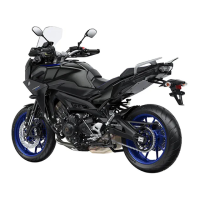
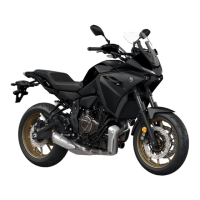
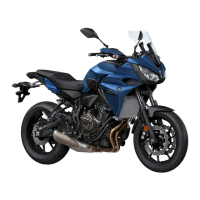
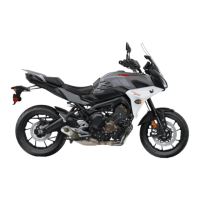
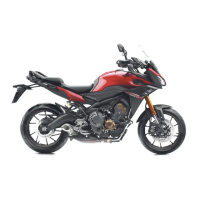
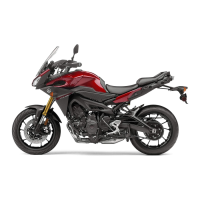

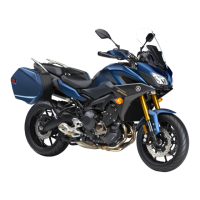
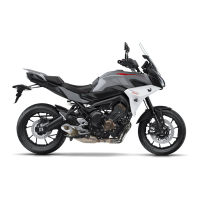
